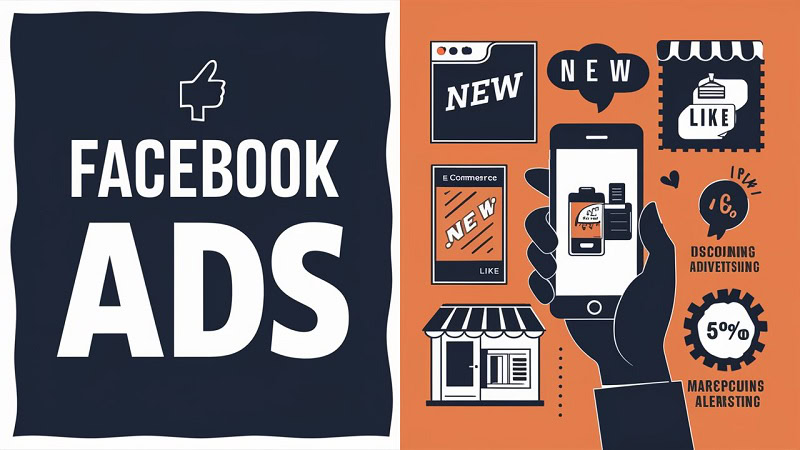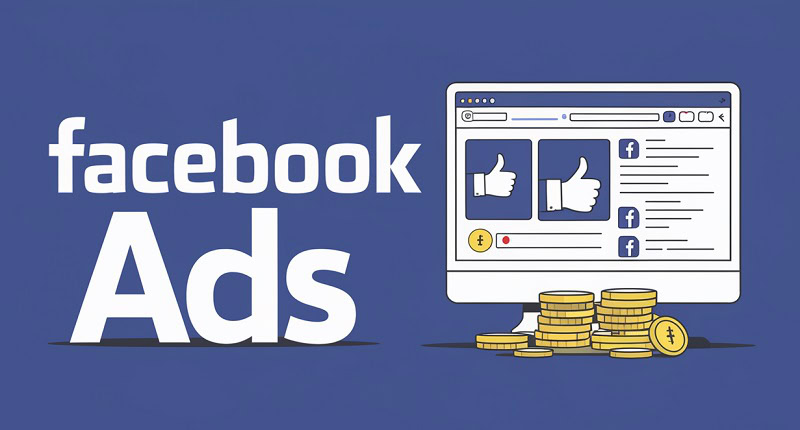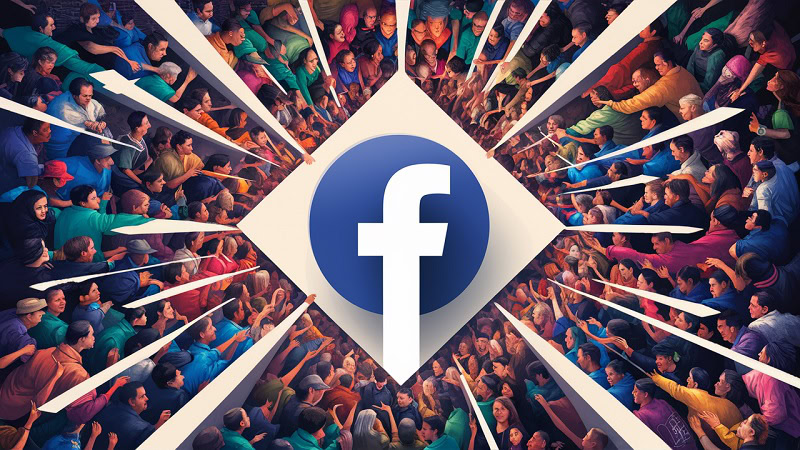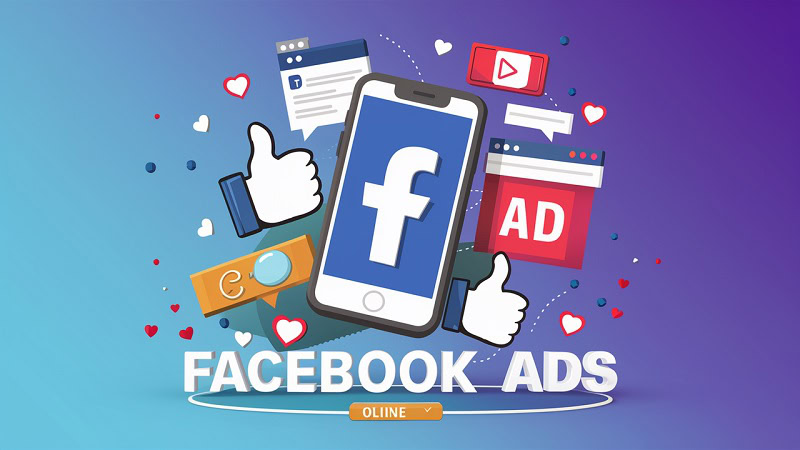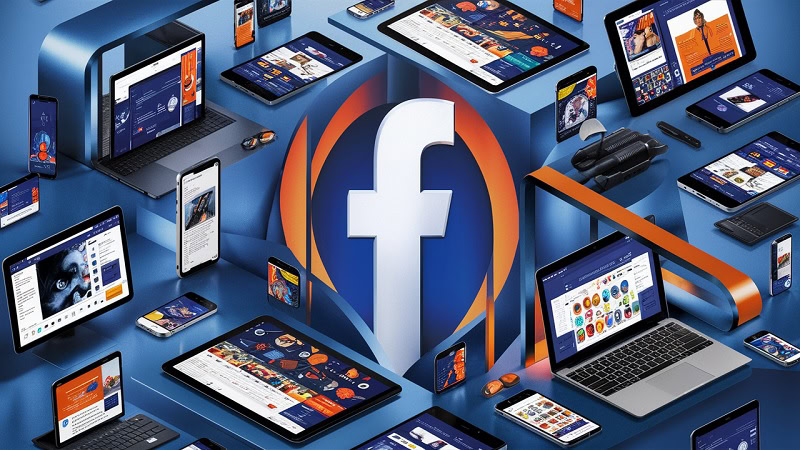
About author: Paulina Poliszewska leverages her expertise in media buying to optimise paid campaigns, ensuring maximum ROI and successful outcomes for DTC brands.
Paid social media marketing is incredibly popular among businesses around the globe.
Annual advertising spend on social media platforms is expected to reach £134bn in 2022 – this means that paid social will account for 33% of all digital marketing investments.
Businesses from every sector, market and industry regularly utilise social media to reach their target audiences.

Boost E-Commerce ROI: Download Our Free CPA & ROAS Calculator
But what can paid social achieve for your brand?
Are these ads worth the investment?
Let’s take a deeper look at the world of social media advertising, and highlight how you can maximise your returns from paid social platforms.
As a specialist Paid socials agency we can help you with your campaigns just get in touch for a free consultation.
What is paid social media marketing?
The term ‘paid social’ refers to adverts being run on social media platforms like Facebook, Instagram, Twitter and Pinterest.
As their name suggests, paid social ads are sponsored placements that cost money to run, as opposed to organic social media posts. Ads can be delivered in many different creative formats and targeted to various audience segments.
There are plenty of paid social partners that advertisers can use to launch campaigns and reach new prospects.
Some social media channels, like Facebook and YouTube, offer colossal reach that enables advertisers to reach a huge range of different audiences.
Other platforms tend to attract more specific segments – for example, LinkedIn for business professionals or TikTok for Gen Z users.
However, there are some core similarities across every social network.
To launch successful ad campaigns, advertisers need to target the right audiences, focus on relevant objectives, and produce effective creative assets.
Paid Social: Goals & Objectives
One of the most important aspects of paid social marketing is your campaign objective.
Your objective will dictate every element of your paid social strategy, from your choice of ad formats to your audience targeting tactics.
Picking the correct objective will keep you on the right track and moving towards achieving your key business goals.
And picking the wrong objective?
You get the idea.
It’s important to stay focused on your business goals throughout your paid social media campaigns, so you’ll need to identify relevant metrics that relate to these objectives.
Different metrics are often attached to different areas of the sales funnel – for example:
- Top Funnel (Brand Awareness) – reach, clicks, engagements, video views
- Mid Funnel (Consideration) – lead generation, app installs, downloads
- Bottom Funnel (Conversion) – online store visits, sales
You must establish a clear campaign objective before launching any paid social ads.
Once your primary objective is confirmed, you can pull together the key metrics that need to be tracked and optimised throughout your campaign.
Organic vs Paid Social Media
Organic social media posts can be useful for communicating with your existing followers.
You can use organic posts to share business news and product updates, and maintain active relationships with your current customers.
This kind of activity can help to increase your organic reach over time.
However, to grow your business and convert a wider audience of prospects, you’ll need to invest in paid social media advertising.
Paid social ads can be targeted toward very specific audience segments. This targeting is fuelled by platform data that will enable you to run more effective ad campaigns.
Although paid social ads will cost money, you should think of them as an investment for your business.
With the right marketing strategy in place, you can run campaigns that are highly efficient and incredibly profitable, helping you to reach and convert brand new audiences.
A healthy mix of both organic social media strategy and paid social activity is integral to an effective digital marketing strategy.
The different paid social media platforms
Selecting the right paid social platform for your campaign is an important decision.
Each platform has its own unique strengths and opportunities. Understanding the value of each partner is crucial to building successful paid social strategies.
Once you’ve gathered some initial learnings from your first paid social ad campaigns, it’s often a good idea to experiment with new platforms with a smaller test budget.
You may discover profitable new audiences or ad formats that deliver strong returns for your business.
Let’s take a look at the major social media networks that you’re likely to use in your future marketing campaigns.
Facebook is a certified social media giant, boasting around 2.93 billion monthly active users.
The size and scale of the platform allow advertisers to reach an enormous audience of potential customers with advanced targeting tactics.
Facebook ads are served based on an auction system, where both bidding amounts and ad quality are key to success.
Brands can target Facebook users based on:
- Demographic data – including age, gender, education, job title
- Interest data – including specific hobbies and interests
- Behavioural data – including previous purchases and device usage
More granular (and often more profitable) audiences can also be built using Facebook pixel data.
Advertisers can also launch a variety of different ad formats, including Carousel ads and Collection ads. Specific ad types can help brands to achieve a range of objectives.
Twitter is a unique social media platform that places a big emphasis on organic conversations and user interactions.
This opens a lot of opportunities for brands to engage directly with customers, enabling them to strengthen consumer relationships and increase conversions.
‘Trending’ topics also regularly appear on Twitter and spark conversations. With the right strategy, brands can capitalise on these topics to drive mass engagement.
Advertisers can access the following audiences through Twitter:
- Demographic audiences – based on language, gender, location, age, etc
- Audience types – targeting conversation topics, keywords, events, etc
- Your audiences – includes follower targeting and Custom Audiences
Twitter ads also work on an auction system.
Although the size of a bid is important, the platform also judges advertiser quality based on three core metrics – Resonance, Relevance, and Recency.
Instagram is an incredibly popular social media platform, with around 1.2bn users accessing the app on a monthly basis.
The platform places a strong emphasis on user content and visuals, with the feed designed to showcase organic posts.
As Instagram is part of the Facebook family, there are a lot of similarities between the platforms in terms of audience targeting and ad formats.
Instagram ads appear throughout the app in various placements and are designed to mirror organic user content. However, paid ads will carry a ‘sponsored’ label to identify them as promoted content.
It’s easy for businesses to advertise on both Instagram and Facebook simultaneously through the Ads Manager. This can be a great way to extend campaign reach and generate better returns by tapping into multiple platform audiences.
LinkedIn allows millions of professionals to make new connections, network with industry colleagues, and post business updates.
Although LinkedIn functions in a similar way to other social media networks, the content on the app tends to revolve around business topics and thought leadership.
LinkedIn advertising is particularly useful for B2B brands who are looking to reach new customers.
The platform is often used to drive lead generation among business decision-makers and business owners.
Advertisers can target the following audience segments on LinkedIn:
- Demographic – based on gender, location, age, etc
- Company – based on company size, industry, name, and followers
- Education – based on fields of study and qualifications
- Job Experience – based on specific roles, seniority, and years of experience
Brands can use multiple ad formats within their campaigns, including Sponsored Content native ads, Sponsored InMail and simple Text Ads.
LinkedIn advertising won’t be appropriate for every e-commerce business, but for brands seeking effective B2B marketing opportunities, the platform is a goldmine.
Pinterest is a unique platform that functions more like a visual search engine than a standard social media app.
The platform is built with a simple and streamlined design that focuses on showcasing visual assets and images.
Users are encouraged to actively search for and discover new visual content through search results. This content is delivered through ‘pins’ which are essentially bookmarks that users can click, view, and save.
Pins can be collected in ‘boards’ to keep them organised.
Adverts are served on Pinterest in the form of ‘promoted pins’ that sit alongside organic content in-feed. These promoted pins look identical to organic posts (and can be saved in the same way) but carry a label to highlight them as paid ads.
Pinterest offers several unique ad formats, including:
- Promoted Pins
- Promoted Carousels
- Promoted Video Pins
- Promoted App Pins
- Collections Pins
- Idea Pins
- Buyable Pins
Marketers can target audiences based on Demographic data, Interest data and Keyword data.
Since Pinterest functions in the same way as search engines like Google, advertisers can also employ keyword strategies to improve SEO and drive superior performance.
Snapchat
Snapchat boasts over 319m daily active users and offers advertisers particularly strong access to Millennial and Gen Z audiences.
The Snapchat app enables brands to launch unique and creative ads that can effectively capture attention and drive action.
Some of these ad types are fairly standard and frequently used to drive mass reach and brand awareness. Others are more bespoke and often used by larger advertisers to create impactful and eye-catching ad campaigns.
Snapchat ad formats include:
- Snap Ads – 10 second video and static image ads that can be adjusted to drive web traffic to a landing page, app installs, or long-form video views
- Story Ads – placements containing 3-20 individual image or video assets
- Sponsored Lenses – promoted AR experiences and filters
- On-Demand Geofilters – sponsored camera filters for geofenced locations
The key to success on Snapchat is creativity. User feeds are packed with both organic and promoted content, so advertisers need to stand out to drive engagement.
Advertisers can use basic targeting tactics to reach different audiences (e.g. Interest, Demographic) but can also use pixel data to create more granular segments.
TikTok
TikTok may be relatively young when compared to other established social media platforms, but the app has achieved jaw-dropping growth in recent years.
Around 1 billion users log into TikTok every month, and the platform is particularly popular among Gen Z users.
The app offers advertisers immense reach and scale and is continuing to develop new and exciting marketing opportunities that can deliver strong returns.
Advertisers can take advantage of several TikTok ad types, including:
- In-Feed Video Ads
- TopView Ads
- Spark Ads
- Brand Takeovers
- Branded Hashtag Challenges
- Branded Effects
Standard audience targeting options are available, but brands can also create more advanced segments (i.e. Customer File, App Activity) using first party and pixel data.
Creativity is the key word when it comes to running successful TikTok ads.
Advertisers need to create assets that resonate with the TikTok audience, tailoring content to the platform and staying up-to-date with the latest user trends.
YouTube
YouTube is the second largest search engine in the world, which tells you everything you need to know about this social media colossus.
The YouTube platform receives 1.7bn unique monthly visitors, and 694,000 hours of video content are streamed every minute on the website.
YouTube is the home of online video, and this provides advertisers with a wealth of content to target and millions of users to convert.
Marketers can access a wide range of ad formats on YouTube, including:
- Skippable and Non-Skippable In-Stream Video Ads
- Discovery Ads
- Bumper Ads
- Overlay Ads
- Companion Banners
- Display Ads
However, the real power of YouTube advertising comes from its advanced targeting capabilities.
Data-fuelled audiences can enable e-commerce businesses to deliver exceptional results.
Advertisers can build audiences based on demographic information, sophisticated Interest segments (e.g. Affinity, Life Events, In-Market) and first party data.
Proven strategies for paid social success
Every business is different, and your paid social tactics will always vary depending on your platform, audiences, and objectives.
However, by following some best practices for paid social marketing, you can consistently launch campaigns that crush your revenue targets and business goals.
Install a pixel as early as possible
The vast majority of social platforms enable businesses to implement a pixel on their website that bridges the gap between paid social ads and online sales.
Pixel data allows advertisers to track conversions more precisely, build highly profitable customer audiences, and measure a more accurate campaign ROI.
The earlier you install a website pixel, the quicker you can begin to gather valuable data to fuel your paid social campaigns.
(Although it’s true that iOS updates have made pixel-based tactics a little trickier when targeting Apple users, there’s still enormous value in installing a website pixel!)
Improve performance with A/B tests
A rigorous test-and-learn strategy can help to rapidly improve the performance of your paid social campaigns.
Testing different ad variables will allow you to refine your paid social media strategy over time and reduce your Cost Per Click and Cost Per Acquisition.
A/B testing might involve experimenting with different:
- Creative assets (e.g. images and videos)
- Headlines
- Ad copy
- Audience segments
- Ad formats
- Days/times
The key is to identify your key test metrics (e.g. CTR, Cost Per Acquisition, conversion rate) and then monitor these numbers very closely.
Once you’ve identified the best-performing social media ads, you can adjust budgets accordingly to maximise returns.
Tailor your creative assets to each platform
When you’re running social media campaigns across multiple networks, it can be tempting to reuse the same creative assets as much as possible.
However, this can be a costly mistake.
Every social media platform is different, and assets that perform strongly with one partner may not deliver the same results with another.
For example, a 60 second video ad may be able to perform well on YouTube, but is unlikely to maintain the attention of a fast-scrolling TikTok user.
A snappy asset that’s focused on Gen Z shoppers may not resonate with business professionals on LinkedIn, but could deliver high levels of engagement on Snapchat.
When you’re planning a multi-channel social campaign, make sure that your assets are built with specific platforms, audiences, and ad formats in mind.
Paid social costs and budgeting strategies
If you’re new to the world of paid social marketing, it can be tricky to budget for different platforms.
Although every platform will charge different prices and operate with unique buying models, there are some common factors that will impact costs across the board.
These cost factors include:
- Ad types
- Bidding strategy
- Competitor activity
- Target audience
- Seasonality
- Industry/market
It’s also important to monitor your spending closely whenever you launch a new campaign.
If you’re spending your budget inefficiently, you need to react quickly and adjust your approach. Set up regular reports to stay in the loop.
Plus, you can always start advertising with a small test budget that you feel comfortable with and expand your investment over time. Once you’ve gathered some initial learnings and made optimisations, you can begin to increase your budget.
Interested in learning more about the costs associated with specific platforms?
We’ve got you covered.
Check out our all-encompassing guide to social media marketing costs for detailed information on platform prices and budgeting guidance.
Scaling paid social media marketing
So, you’re quickly getting the hang of paid social media marketing.
You’ve identified a few high-performing audiences, managed your budget effectively, and driven consistent performance. What now?
The next step is ‘scaling’ your paid social marketing efforts. This means increasing your budget efficiently while maintaining positive returns.
So how do you know when to scale up?
The first step is to calculate your Return On Ad Spend (ROAS).
If you’re delivering a consistently positive ROAS, that’s a good indicator that you’re ready to scale. Don’t worry, there are no complex maths involved here. The ROAS calculation is:
(Revenue from paid advertising / Cost of paid advertising) * 100 = ROAS
You’ll also need to give your ad sets between 3-5 days to optimise before attempting to scale up with extra budget. If you attempt to scale too quickly, you can disrupt the learning phase.
Below are some proven methods that you can use to scale your paid social investment and generate increasing returns:
- Increase ad set budgets in small increments (i.e. 10-20% at a time)
- Build and test Lookalike audiences
- Replicate your most profitable ads and target new audiences
- Target a broad audience and narrow it down to the best-performing segments
- Minimise your audience overlap between ad sets
Successful scaling is all about increasing your budget at the right time and supporting the right ads. If you can achieve this, then you’ll quickly see the benefits.
The pros of paid social advertising
Let’s summarise the key advantages and opportunities that paid social advertising offers.
Paid social ads can enable your business to:
- Rapidly reach and convert valuable new audiences
- Achieve specific business goals (e.g. improving brand awareness, increasing sales)
- Discover new marketing tactics through A/B testing
- Consistently increase sales and revenue over time
The cons of paid social advertising
However, no form of digital marketing is perfect.
Paid social can do a huge amount of good for your e-commerce brand, but it also comes with some potential disadvantages.
Some of these drawbacks can include:
- Time-consuming and potentially expensive campaigns
- Highly competitive social networks
- Lower CTRs when compared to channels like paid search
However, it’s important to note that effective campaign management can help to prevent (or minimise) all of these disadvantages.
When paid social ads are expertly managed and properly optimised, the business benefits massively outweigh the potential downsides!
Is paid social worth the investment?
The short answer to this question?
A resounding ‘yes’.
Paid social is a worthwhile investment for the vast majority of e-commerce brands.
Almost every type of business can achieve exceptional results through paid social and tackle a huge range of advertising objectives.
Brands all around the globe, from a wide number of different industries and markets, generate positive returns from paid social advertising.
All you need to do is make sure that your campaigns are managed effectively. That means selecting the right objectives, targeting relevant audiences, and optimising rigorously.
Expert pointers for paid social advertising
Ready to harness the power of paid social for your own business?
That’s what we like to hear.
Below are some handy pointers that will help you to optimise performance and generate maximum revenue from your campaigns.
Establish a clear objective
Every successful paid social campaign starts with a clear and relevant objective.
It’s crucial to select an objective that aligns with your business goals and monitor the metrics that relate to this primary objective.
You should regularly optimise your ads based on your core objectives to deliver the best possible results for your business.
Research ad formats and specs
Choosing the right ad types and formats is also very important for paid social campaigns.
Different ad formats are suited to different goals, so you should plan carefully to ensure that you’re using the right combination of placements.
You’ll also need to double-check ad specifications before producing any new assets. If you don’t stick to the ad specs, you can end up wasting valuable time and money on creative edits.
Experiment with different platforms
Running campaigns on multiple social media platforms can offer a lot of benefits to your business.
By utilising several social networks you can significantly increase your audience reach, experiment with different tactics, and open up new revenue opportunities.
However, there’s no need to rush or launch campaigns for the sake of it.
If you’re just gaining confidence with a certain platform, gather learnings and audience insights before experimenting with a different network.
How can I get started with paid social media marketing?
Every social media platform will have its own unique campaign processes, so you’ll need to double-check what’s required for each network.
However, below are some fundamental steps that will apply to every paid social partner:
1. Create a new business/advertising account for the platform
2. Establish a clear and measurable campaign objective
3. Research the audience targeting options available
4. Select the right ad formats for your objective
5. Produce quality creative assets based on platform specs
6. Set up regular campaign reports (and be sure to optimise!)
If you can cover off this checklist before launching any new social media campaigns, you’re guaranteed to hit the ground running.
What are some useful tools for paid social marketing?
There are a plethora of digital tools and services that can help you to run more effective paid social campaigns.
But if you’re interested in utilising online tools, it’s important to think about why you’re using them.
What’s the gap in your current paid social strategy that you’re looking to fix?
For example, if you’re keen to understand how consumers are perceiving your brand, you might use a social listening tool (such as BrandWatch) to track sentiment.
Alternatively, if you need assistance with producing paid social creative assets, you might use a tool like Canva to fulfil your graphic design needs.
There are also built-in tools that many social platforms offer (such as the Facebook Ads Manager) that can help you to measure campaign performance and optimise effectively.
It’s all about selecting the right tools for the job.
Social media marketing can totally transform your e-commerce business.
Paid social advertising can allow you to access entirely new audiences, generate significant amounts of revenue, and gather invaluable campaign learnings.
The more time and effort you invest into running effective paid social ads, the better your results will be.
Set a clear campaign objective, choose effective formats and audiences, and commit to regular optimisations. Follow these steps, and you’ll be on track for paid social success!


